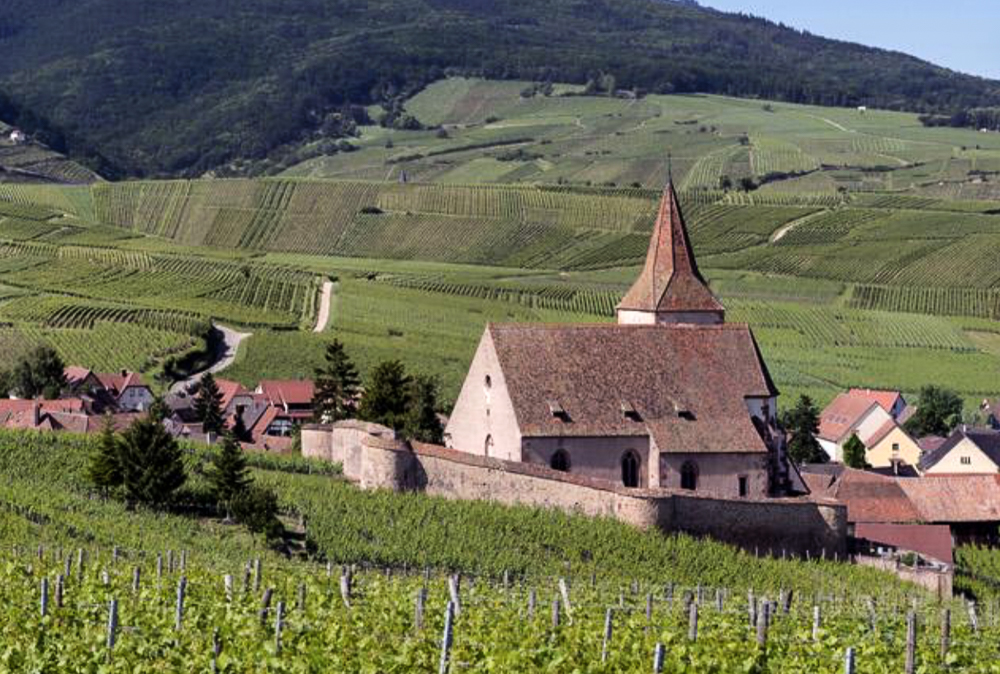Secret Grand Cru Excellence
I'm heartened by the leap forward that white wine has taken over the last decade, shedding its mostly feminine association and earning a place at the table for even the most macho of drinkers. Seeing that many of us at K&L drink far more white wine than we do red, it's nice to be able to share our passion beyond Cabernet and Pinot Noir. That being said, I'm also relieved that the cultural evolution of wines like Riesling, Sauvignon Blanc, and other dry, aromatic varietals hasn't turned into a pissing contest. While you still may pay an arm and a leg for grand cru Montrachet, there are hundreds and hundreds of other outstanding whites from all over the world that fly under the radar of the general public and are still relative secrets among those who adore them. For example, I think we sell more craft IPA beer in a can than we do Alsatian white wine. I'll have to check the sales numbers to be sure, but I'd be willing to take that bet in the meantime. While it's always slightly painful to see something so wonderful go unappreciated by the greater public, it's also thrilling when a deal like the following one comes along.
Where is Alsace, you ask? It's a mountainous strip of vineyard land that runs north to south along the French/German border, near Freiburg on the way down to Switzerland. Much like its German counterpart, the region is known for a small amount of Pinot Noir and dry, fresh, clean-tasting aromatic whites like Riesling, Gewürztraminer, and Pinot Gris. Like most of France, its best vineyards have been classified and labeled as grand cru sites, top in their class. The very best of Alsace's grand cru whites can indeed be very expensive. For example, a bottle of the Trimbach "Clos St. Hune" Riesling from Alsace will run you nearly two hundred dollars, which is a big part of what makes our latest acquisition so exciting. My colleague Ryan Woodhouse managed to snag a hot deal for two of Julien Schaal's top grand cru expressions, but for roughly ten percent of that aforementioned price. The 2016 Rosacker is from the same site as the legendary St. Hune, from parcels just outside the walled "clos" owned by Trimbach. It's a vineyard that dates back to 1483, for fans of history, and for centuries has been heralded for its incredible Riesling. When you taste the precision of the acidity, the concentration of the minerality, and the delicacy of the fruit here, there's no doubt you're drinking something super high end. The combination of soil and climate at Rosacker creates one of the most perfect sites for dry white wine in the world, yet you can still enjoy all of that complexity for twenty bucks. Drinking grand cru French wine for that price makes me incredibly happy (as you might expect).
So why does a grand cru Chardonnay from Montrachet cost hundreds and hundreds of dollars, while a grand cru Alsatian Riesling only tens of dollars? Because of the same market forces that have driven Bordeaux and Napa prices into the stratosphere and the same pop culture conditions that have created trophies out of Bourbon bottles. It's merely a matter of societal appreciation. The world market values Chardonnay and Cabernet more than it does Riesling, hence the dollar amount people are willing pay for these luxuries goes up. When we go out to a dinner party, we generally like to show up with a recognizable label so that the rest of the crowd is happy and impressed. Few people, unfortunately, are going to light up with glee when you appear holding a cold bottle of the 2016 Julien Schaal grand cru Riesling from Kastleberg, even though it's a more complex and thrilling wine than many of the $100+ bottles of Chardonnay in the store. Kastleberg is another of Alsace's grand cru vineyards, loaded with blue schist—the rocky soil known for its ability to translate laser-like acidity into the wine itself.
While these wines may not impress your friends, they will impress your palate. Anyone even remotely interested in white wine should try a bottle of each immediately, then decide how much you can afford from there on. That's the issue I'm currently debating: pay for the electricity bill or buy more Alsatian grand cru Riesling for twenty bucks a bottle?
-David Driscoll

